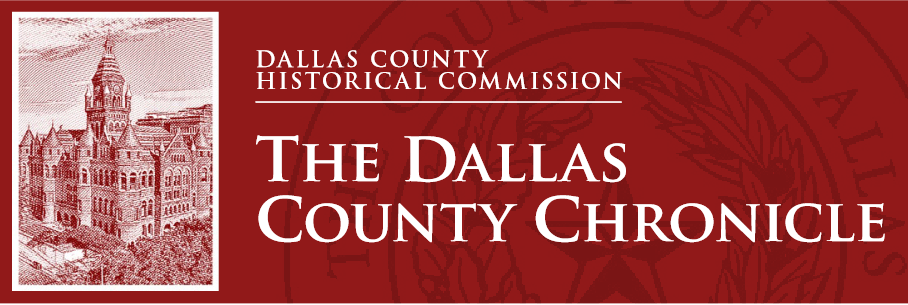Dallas and Pandemics: We’ve Been There Before

This article is reprinted with permission from the Dallas County Historical Commission. The article was originally published in the Dallas County Chronicle, Volume 19, Issue 2, Spring 2020, page 1.
EDITOR’S NOTE: As this issue of the Chronicle is being prepared, the nation is taking what appears to be unprecedented steps to combat a disease.
It all seems very familiar – people saying that it’s “a hoax,” science scrambling to find an answer, businesses closing, shortages of certain peculiar items, restrictions on public gatherings, canceled sporting events, and people offering all kinds of cures – some genuinely sincere and some only genuinely concerned about making money. One could think that we’re talking about today and the COVID-19 virus, but we’re actually talking about the 1918 outbreak of Spanish Influenza.

That disease affected the world like no other since the Black Plague of the Dark Ages. It is estimated that as many as 50 million people died worldwide. One in three Americans contracted the disease, and the mortality rate was devastatingly high – 20% of those who fell ill died. Overall, about 600,000 Americans died because of the disease – a number that exceeded the combined total of those who died in all of America’s wars during the 20th century.
Nor did Dallas escape the pandemic. In fact, how it spread and how the community and local officials reacted to it is again very similar to what is now occurring. Although the national press had begun in September 1918 to report the spread of disease, locally, the city’s health officer down-played its threat, saying it wasn’t much worse than the common flu. However, local hospitals were seeing something quite different and were soon at capacity. For two weeks, the city’s health officer and its board of health deliberated over what to do. Once it appeared that the health officer was prepared to ask the city to pass an ordinance declaring a quarantine, but he changed his mind, and all that he and the health board could agree upon was to require that influenza cases be a reportable illness.
Four days later, with patients now being treated in hospital hallways, city health officials finally decided that stronger action was needed, and the mayor issued a public gathering ban and closed all Dallas theaters, playhouses, and other places of public amusement. Streetcar operators were asked to disinfect their cars each day, to permit only as many passengers on a car as there were seats, and to add extra cars during rush hour.
Immediately, affected businesses complained that they were being singled-out and wondered why they had to close while schools were allowed to remain open. Although the city’s health officer had doubts about the effectiveness of closure methods, the mayor did not. Three days after the city’s initial theater-closing order, the mayor – against the advice of his health board – unilaterally closed all public and private schools, churches, and other remaining forms of public gatherings. Such action came none too soon – 659 new cases were reported on that same day.
The mayor’s action remained in effect for about three weeks. By then, over 9000 cases had been reported, and about 500 people had died – particularly startling numbers when one recalls how quickly this all occurred and that Dallas then was only about one-tenth the size that it is now. It is also thought that many cases went unreported.
In the end, Dallas was relatively far more fortunate than other cities like Philadelphia that had 12,000 deaths or Birmingham and New Orleans that had mortality rates that were two-to-three times higher than Dallas’. That, of course, was of little consolation to those Dallasites who had been ill or who had lost friends and family members.
No one knows how today’s encounter with COVID-19 will end, but one thing is clear – that the skepticism, inaction, and mixed signals that we are presently sometimes seeing with this disease is unfortunately not new.
Image credit: Emergency hospital at Brookline, Massachusetts to care for influenza cases. NARA, Local Identifier: 165-WW-269B-19

